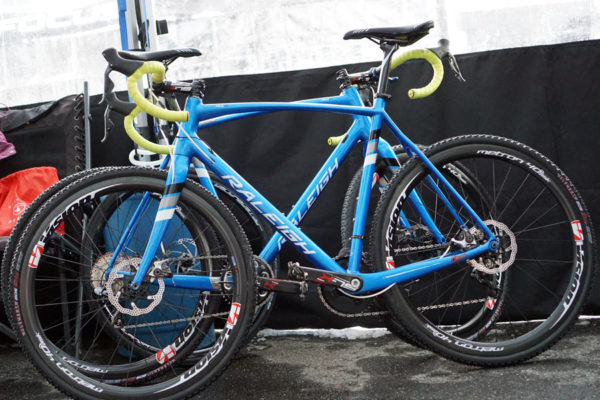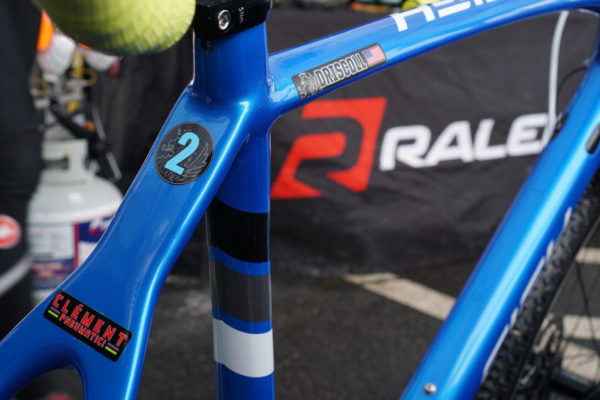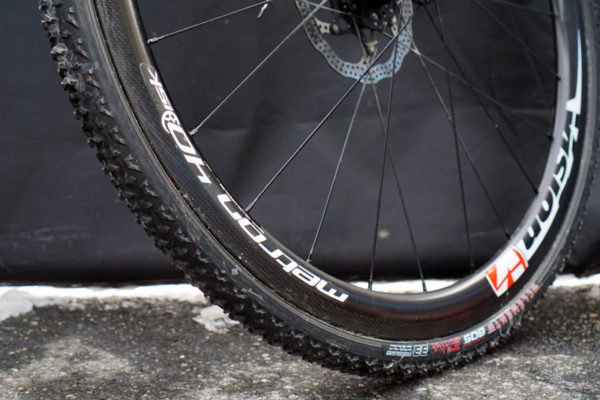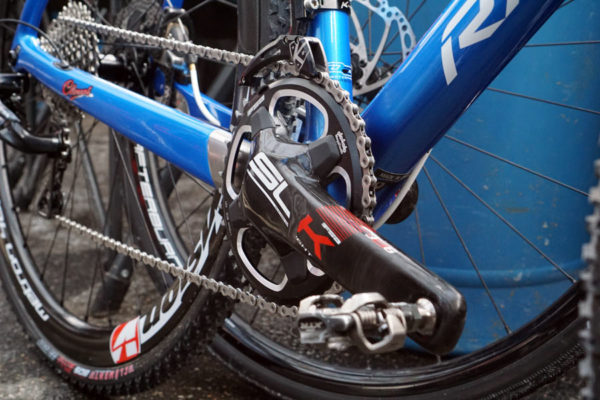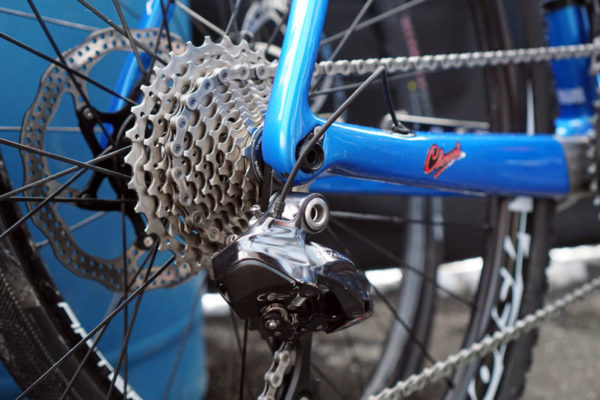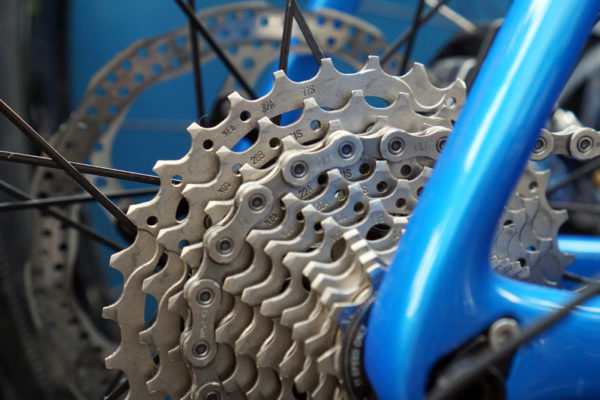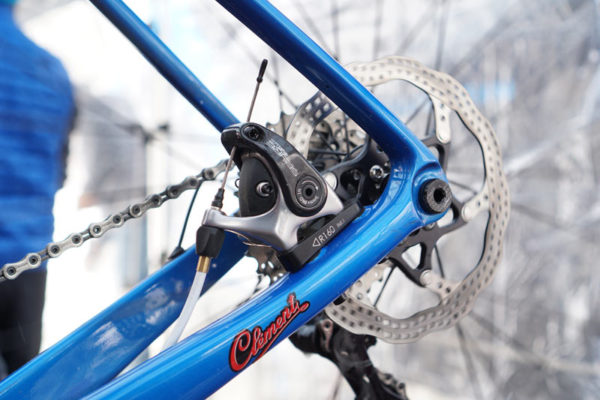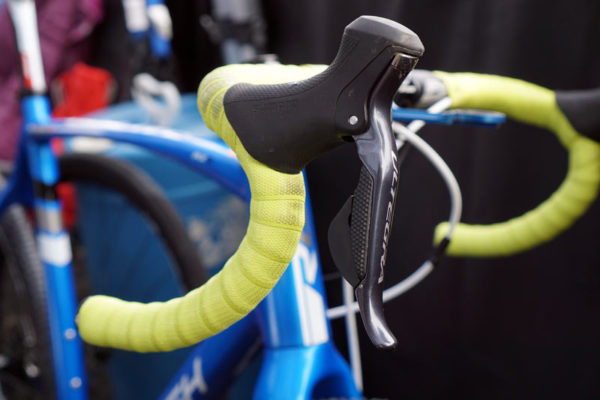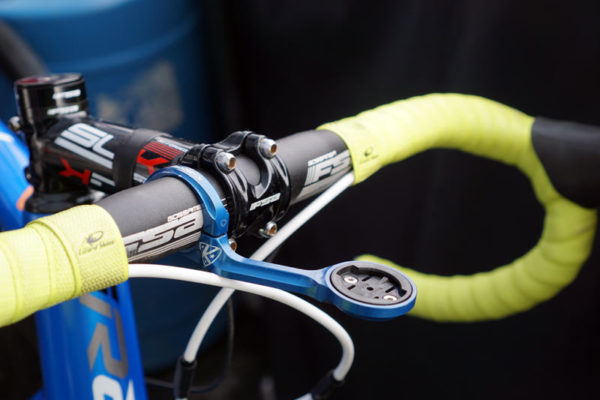Raleigh-Clement’s Jamey Driscoll finished second in the Men’s Elite field, just a couple seconds behind winner Stephen Hyde…and likely would have taken the win had Hyde’s broken derailleur happened even just a hundred feet sooner. Driscoll’s Raleigh RXC was a stock frame, but the parts mix was full of sponsored goods from FSA, Clement, Lizard Skins, K-Edge and TRP.
Each of his bikes is numbered (his bib number was #5) and tagged with his name.
Wheels were Vision Metron 40 Disc carbon tubulars. The ~40mm deep wheel was a common sight on pro bikes.
Different bikes had different tires (PDX, BOS, etc.) already mounted and ready to make for quicker pit prep between laps.
The bike was equipped with Shimano Ultegra Di2 save for the monstrous FSA SL-K carbon cranks with their 42t MegaTooth 1x chainring.
An 11-32 cassette provided the range to tackle the climbs (those that were rideable, anyway).
Jamey opted for the mechanical TRP Spyre over the hybrid mech-to-hydraulic HyRD calipers because they’re lighter and simpler to set up. He also opted for a 160mm rear rotor over the stock 140mm size that comes on the RXC.
An alloy FSA Gossamer handlebar is paired with the SL-K stem. The stem is a 3D forged and machined stem that usually comes with a carbon fiber faceplate, but this one looks like they switched to an alloy faceplate. K-Edge computer mount is joined by their CX Chain Guide. Lizard Skins’ grippy DSP bar tape finishes things off.
